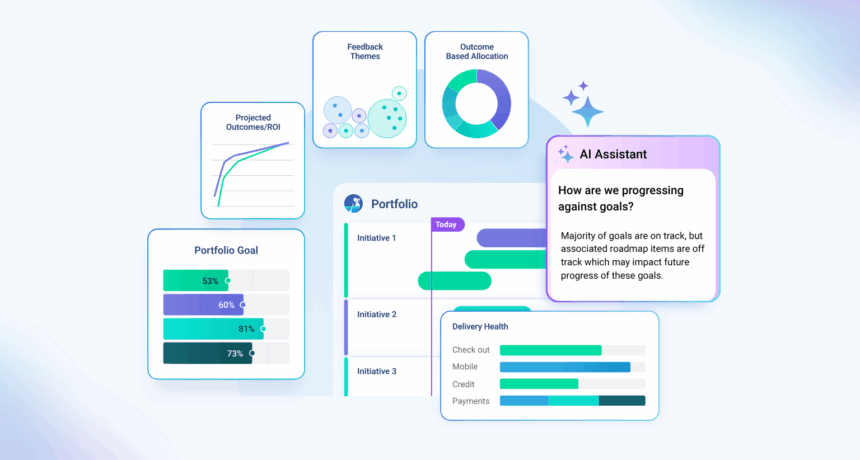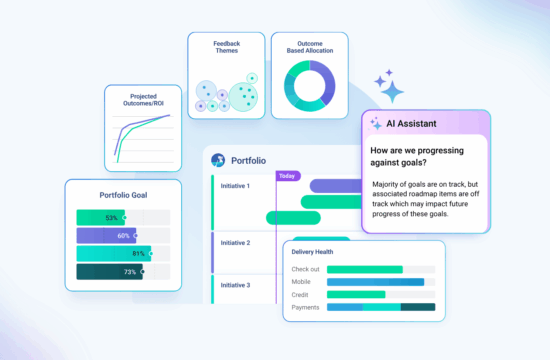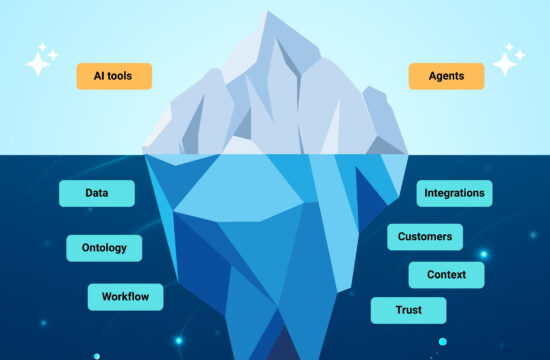Is Strategic Planning Still Relevant in the AI Era?
In today’s world of AI-driven product development, where prototypes are built in Lovable in minutes and expectations on product teams are sky high, the question arises: Is strategic planning still relevant, or has it outlived its usefulness?
While the planning landscape is changing, driven by the speed and scale that AI brings to organizations, the need for strategic direction remains critical. Annual planning serves as the bedrock of aligning teams, setting objectives, allocating investments, and charting the path from concept to customer value. However, in the AI era, annual planning needs to be more dynamic, outcome-focused, and adaptable than ever before.
So what stays the same—and what needs to evolve for organizations to succeed in this era of such rapid change?
Companies Still Need to Connect Strategies and OKRs and Investments
Objectives and Key Results (OKRs) and similar frameworks are still critical as measurable outputs of strategy—ensuring teams are aligned on goals and how progress is measured. Without OKRs that connect to business strategy, organizational priorities get lost, and investment decisions become scattered. Connecting the dots between strategy, goals, and investments in real-time is crucial.
Prototypes Still Need to Become Real Products That Scale
Since it’s easier than ever for product teams to develop an MVP, the path from prototype to customer value at scale becomes an even more important part of the product development lifecycle (PDLC). Product teams still need to bring concepts to life, address technical and operational challenges, and scale solutions effectively. Dependencies, resource allocation, and cross-functional collaboration are as vital as ever.
Cross-Functional Dependencies Still Need to Be Aligned
Building great products doesn’t happen in a vacuum. Strategic planning must still align diverse functions—product, engineering, marketing, sales, and customer success—to ensure a smooth transition from idea to market. Your PDLC is only as fast as the slowest part- it doesn’t matter if your developers are 40% faster if legal delays your product launch anyway. Alignment, especially in the AI age, is critical for delivering customer value quickly and accelerating product outcomes.
What’s Changing in the AI Era?
While the foundations of strategic planning remain steady, the AI era introduces significant shifts in how organizations approach planning and execution.
1. Bottlenecks Can Be Anywhere in the PDLC
In the AI era, bottlenecks can happen anywhere in your product development lifecycle, which is why it’s important to have visibility into that entire process. This full PDLC view includes integrating customer feedback, aligning go-to-market teams, ensuring compliance, and measuring product impact across the lifecycle—leveraging AI at every stage (not just the building stage).
“Many teams struggle to balance speed and governance. Dragonboat helps by giving visibility across portfolios so teams can move fast while staying aligned.”
– Cristin Kenney, VP of Product at Fortellar
2. More and Faster Ideation Requires Outcome-Based Funding
Gone are the days of long, drawn-out planning cycles. The AI era prioritizes speed. Product teams must iterate quickly, investing in outcome-based initiatives rather than rigidly structured plans.
Outcome-based funding is increasingly being adopted to place AI bets and scale what works (without investing in initiatives that don’t). As outlined in Agile Portfolio Management Best Practices, agile funding strategies allow organizations to test ideas rapidly, measure their impact, and adapt investments accordingly.
3. Modern Enterprises Need Faster Planning, Faster Adjustments
Strategic planning in the AI era has to deliver more value with fewer resources. Product leaders now rely on real-time insights, AI-powered tools, and live data to make quick, informed decisions. Frequent adjustments to roadmaps and resource allocation ensure plans are responsive to changing market dynamics and customer needs.
As Dory Weiss, VP of Engineering at Athian, puts it: “Your plan will likely be wrong. The value isn’t in predicting the future, it’s in how quickly your teams can recognize reality, re-baseline, and adjust course together without losing momentum or trust.”
Operating at Speed and Scale Requires Portfolio Intelligence Tools Like Dragonboat
In the AI era, where speed, adaptability, and data-driven decision-making define success, organizations can no longer rely on static, once-a-year planning. The challenge isn’t just building faster—it’s staying strategically aligned while continuously learning, adjusting, and delivering value at scale.
That’s where Dragonboat comes in.
Dragonboat bridges the gap between strategy and execution, enabling organizations to transform traditional planning into a continuous, intelligent process. Its AI-powered Strategic Product Portfolio Management (SPPM) platform provides the visibility, flexibility, and insights needed to plan dynamically, allocate resources intelligently, and connect outcomes to strategy in real time.
“Dragonboat helped us connect products, initiatives, and programs into one view — giving us visibility and a single source of truth that Jira couldn’t provide.”
– Lucas Smith, Director of Agile and Program Services, Toyota Connected
Designed by experts and proven at enterprise, Dragonboat addresses key needs for product portfolio success at speed and scale:
- A Strategic Layer above Work: Make better decisions with a portfolio intelligence layer that’s dynamic, flexible, and contextually integrated with tools like Jira, ADO, Power BI, and Salesforce.
- AI-powered Scenario Planning: Instantly re-prioritize and reallocate investments as new data emerges—without losing sight of strategic goals. Instantly re-prioritize and reallocate investments as new data emerges.
- Full PDLC Visibility: Connect every phase—from concept to delivery to market impact—so leaders can identify bottlenecks, align teams, and accelerate outcomes.
- Outcome-Based Alignment: Link OKRs, initiatives, and resources in one connected system, ensuring everyone—from leadership to delivery teams—is rowing in the same direction.
Companies need a new breed of tools like Dragonboat for strategic planning (and execution) in the AI era.
“Bringing this product to life took over 30 engineering teams and 3,500 epics. It was completed in 9 months – a monumental effort.”
– Rob Seidman, Chief Product Officer of BNPL at U.S. Bank
Request a demo of Dragonboat today to see how your team can plan and deliver with confidence.



